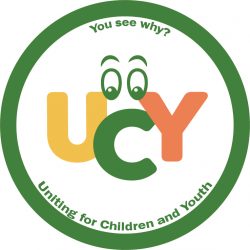Question 2 – Zone 12 Responses
Contents
-
- The Question in brief
- Response from:
- Rawlson King
- No Response
Link: See Responses to Question 2: Parts 1 – 6 for a table summary of the first 6 parts of Question 2.
The Question in Brief
There are 8 parts to this question. “Yes” or “No” answers were required for the first 6 parts, but candidates were welcome to qualify their answers. Part 7 required a prose answer, and part 8 was optional. In brief, the question asked the following. The full text of the question is found at: Question 2 – Systemic Innovation.
- Do you believe that public education needs to evolve from its industrial management practices to ones more appropriate for today? Y/N
- Do you agree that formal scheduling is a major barrier to systemic innovation? Y/N
- Would you act to establish an OCDSB Systemic Innovation Advisory Committee made up of student, parent, teacher, administrator, ministry, university professor, business and community representatives? Y/N
- If “Y” to #3, would you act to have the committee established in time for systematic field studies to begin in September 2019? Y/N
- Would you support developing a board wide inventory of innovative actions by teachers and principals? Y/N
- Would you help to create partnerships with universities that want to conduct studies of how school boards can transition from the industrial model to one that suits today’s needs? Y/N
- What is your vision of the ideal school?
Rawlson King
- Y
- Y
- Y
- Y
- Y
- Y
- An ideal public school is one that reflects the needs and requirements of the community. As a consequence, an idea school is a unique reflection of a neighbourhood. An ideal school should take the needs of community into account and also incorporate innovation so that schools can be 21st century drivers of social mobility for our youth.
I believe innovation in education can take lots of forms, and includes new technology, teaching methods and partnerships with local community. That’s why I think the OCDSB should give more serious consideration to experimental pilots in special ed literacy, inquiry-based education and informal scheduling that moves us beyond the traditional 19th century “industrial education model” in certain instances.
In Ottawa, both John McCrae Secondary School and Lester B. Pearson High School have offered experimental programming that use non-traditional teaching methods. Expansion of that type of programming to schools that are “at risk” themselves due to low enrollment could generate more interest in programming, while maintaining high educational quality. I think the limited extension of such programming to high schools in high-needs neighbourhoods, for example, could create demand and expand enrollment, not unlike the programming demand for IB and arts programs at other high schools within the city.
Unfortunately, the structure of our public education system, which contains multiple school boards, creates competitive pressures and affords myriad choice to parents, contributing to OCDSB’s enrollment pressures. Though not a panacea, I think we could, in fact, work towards reversing declining enrollment if we make OCDSB schools more attractive to both students and parents by offering such compelling new programming designed to provide students with more strategic tools to engage the modern world. Teachers I have talked to believe that they can glean greater professional fulfillment from such an arrangement, without any change to their labour arrangements.
No Responses
– Sandra Schwartz

